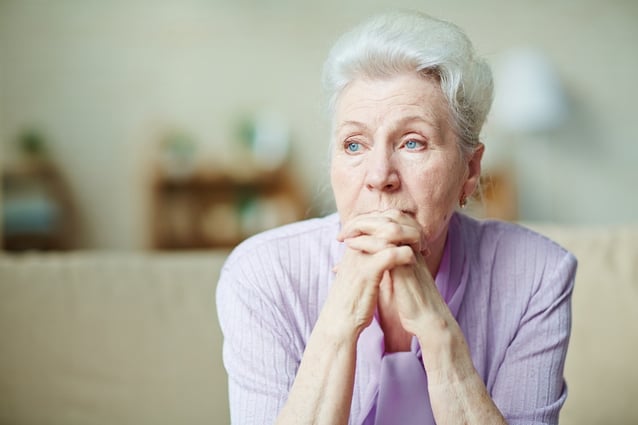 As America’s population rapidly ages, elder abuse is becoming a growing issue facing our country. The National Incidence Abuse Study found that for every reported incident of elder abuse, neglect, exploitation, or self-neglect, approximately five go unreported.
As America’s population rapidly ages, elder abuse is becoming a growing issue facing our country. The National Incidence Abuse Study found that for every reported incident of elder abuse, neglect, exploitation, or self-neglect, approximately five go unreported.
What is Elder Abuse?
Elder abuse can happen anywhere a senior lives or receives care, whether it is in the home of adult children or healthcare facilities like day-care or long-term care facilities. Aging adults can be highly vulnerable to abuse and neglect. Furthermore, due to fear, confusion, reliance, medication, or accessibility issues, these vulnerable adults may not know how to report or stop the abuse.
To help protect this increasing population, healthcare professionals need to fully understand elder abuse, know the warning signs and learn how to prevent abuse.
Oftentimes, abuse and neglect begin unintentionally; other times, it is more overt. Seniors might experience many different types of abuse, including:
Physical Abuse
Physical elder abuse occurs when someone, typically a caregiver, uses physical force against an aging adult that results in pain or injury. Physical abuse can include pushing, hitting, using medicines inappropriately, or using unnecessary restraint or confinement. You can recognize warning signs of physical abuse by looking for unexplained injuries (especially if they are symmetrical), broken bones, medicines that have been taken incorrectly or broken glasses.
Emotional Abuse
Emotional abuse is more subtle than physical abuse; it involves treating others in ways that cause emotional distress. Emotional abuse can include threats, humiliation, blaming the aging adult for problems, ignoring seniors, cutting older people off from the outside world or attempting to scare or terrorize an aging adult. Signs of emotional abuse can include controlling behavior by caregiver, caregiver not letting others visit the senior, or the elderly person showing symptoms that look like dementia, such as rocking back and forth or mumbling to themselves.
Sexual Abuse
Sexual abuse can take many forms, from unwanted, unconsented sexual contact to forcing an elderly person to watch sexual acts. Healthcare professionals can spot sexual abuse by noticing bruises around the genitals, unexplained sexually transmitted infections or bleeding from the vagina or anus. Adults can also demonstrate inappropriate, aggressive, or unusual sexual behavior, or extreme agitation.
Neglect
Neglect is a serious issue that constitutes more than half of all cases of elder abuse. Sometimes neglect is unintentional, a result of not understanding exactly what care a senior needs. Other times neglect involves intentionally ignoring an elderly person’s needs. Look for signs of neglect such as unexplained weight loss, dehydration, bedsores, dirty or soiled surroundings or leaving an elderly person alone in public.
Financial exploitation
Financial exploitation occurs when someone uses a senior’s money or personal property without their consent. From scam artists to caregivers, many people attempt to exploit aging adults by misusing their checks or credit cards; stealing cash, objects or their identity; or by forging their signature. Seniors are often exploited through scams such as fake prizes, scam charities or investment fraud.
Identify financial exploitation by paying attention to a senior’s finances and property. Their items or cash might go missing, money might be mysteriously withdrawn from their accounts, or they could suddenly receive unnecessary services or subscriptions. Changes in wills, power of attorney or other financial holdings may also signal financial exploitation.
Healthcare fraud and abuse
Unfortunately, even healthcare professionals might take advantage of aging adults through healthcare fraud and abuse. This can include charging for services the person did not receive, overcharging for care, over- or under-medicating, or recommending medicines that won’t help their condition. To spot healthcare fraud or abuse, watch for practices that seem incorrect, such as issuing bills more than once for the same service, not answering questions about care or problems with the care facility such as crowding or inadequate amounts of staff members.
How to Prevent Elder Abuse
No matter the type of abuse, everyone can follow the same steps to prevent it. First, listen closely to older adults and their concerns. Do not just write complaints off as signs of dementia or frailty. Educate yourself on the warning signs, such as strange tension between the caregiver and elderly person, changes in how your elderly charge behaves, or the caregiver refusing to allow you to see the elderly person by themselves.
Next, intervene by reporting elder abuse to the appropriate authorities, which would typically be adult protective services. In the US, you can call 1-800-677-1116 to find elder abuse prevention authorities in your area or visit this site to find services in your state. If you are worried someone is in immediate danger, call 911.
Finally, educate yourself and others about the elder abuse prevention laws in your state. These laws can help you understand how to take action when you suspect elder abuse and give you the resources you need to protect the elderly.
As a healthcare professional, you can make a difference in the lives of seniors. By understanding the signs of elder abuse, knowing how to prevent it and learning how to report it, you can protect elderly patients and help them receive the quality care they deserve.




